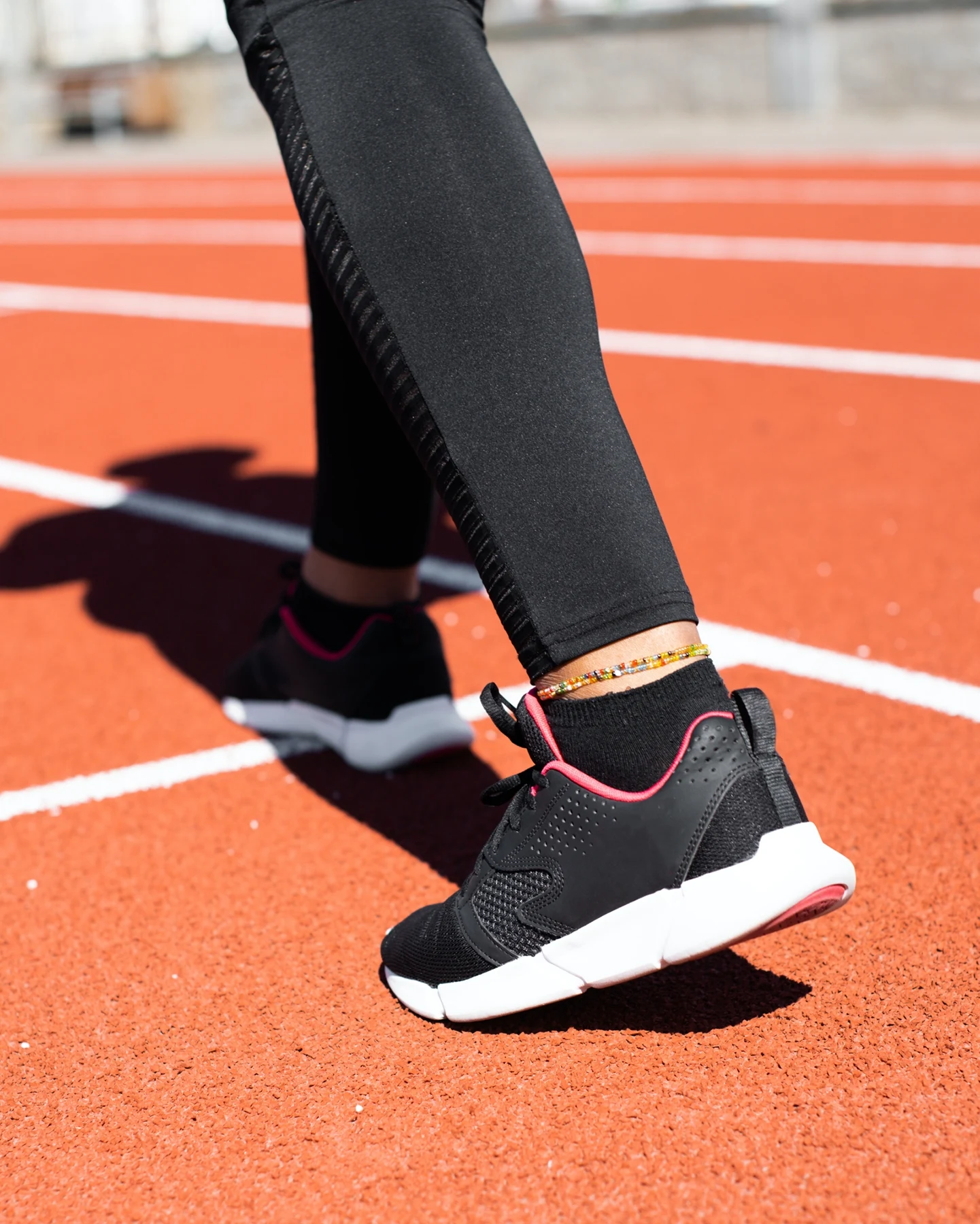Do you have relatives or friends who live in assisted living facilities? Finding the ideal gift can be challenging. Certain gifts may be prohibited due to health concerns: people who must maintain a healthy blood sugar level should avoid sweets or chocolates. There is little space in the apartment or place for an additional stuff. Your giftee's physical or mental capacities (or both) may be deteriorating in some circumstances.
Any gift you offer will almost certainly be appreciated. However, it helps if the item is something the recipient can actually use and enjoy. Make it specific to their diseases, requirements, and interests. The following is a compilation of gift ideas for the holidays – or any other occasion.
Social engagement gifts
People who live in assisted living homes often find themselves feeling lonely and isolated. Maintaining social connections with loved ones combats this and also aids in the prevention of chronic disease and cognitive decline. Among the possible gifts are the following:
A simple phone. The simpler a phone is to operate, the more likely it will be used by your loved one. Purchasing a landline phone that has large and easy numbers (starting at $25), a flip phone (starting at $35), or a smartphone that has few buttons and apps for easy navigation (starting at $50). Bear in mind that cell phones require a monthly service fee; rates vary by carrier.
A smart speaker. If using a phone is too difficult for your loved one, consider investing in a smart speaker ($20 and up) that can be set to dial important numbers (like yours). At any time, commands can be spoken aloud to initiate a call. Ascertain that your loved one has internet access, which is required for smart speaker use.
A photo album. A loose-leaf picture album (about $20) or an easily manufactured photo book ($10 and up) filled with recent photos of family and friends can serve as a warm reminder of connections, or as a present to give to others in the senior living home. This type of social engagement is critical for wellness. Additionally, it will make the individual feel good to see all of the images of folks who care about them.
Gifts to aid independence
Simple actions can become difficult as a result of health difficulties. These gifts might provide a measure of independence for your loved one.
Tools that are adaptable. With a long-handled shoehorn, a button hook, or a zipper pull (all under $10), your loved one may regain some control overdressing.
A magnifier. A magnifying glass ($5 and up) is very useful for those with poor vision (and who hasn't misplaced their reading glasses?). It's also useful for reading or seeing little objects. Make it a lighted magnifying glass ($15) for a wonderful enhancement.
Aids to writing. Writing becomes difficult due to hand arthritis or neurological diseases (such as Parkinson's disease). Adaptive pens with ergonomic shapes ($10 and higher) can assist your loved one in jotting down facts or thoughts.
What Is Acute Prostatitis
In men, the prostate is a walnut-sized gland located beneath the bladder. This gland produces a fluid that when combined with sperm forms semen. Because the prostate surrounds the urethra (the tube that transports pee from the bladder to the outside of the body), diseases that cause the prostate to expand or enlarge may press on the urethra, causing pain or difficulty urinating.
Prostatitis is an inflammatory condition that affects the prostate gland. Acute prostatitis is an inflammation of the prostate gland that manifests itself suddenly. Acute prostatitis is caused by an infection, most commonly by bacteria that migrate up the urethra and into the prostate. Several of these bacteria are common pathogens found on and inside the human body. Other infections are spread sexually.
Prostatitis affects the majority of men who have a normal prostate gland, although the infection may be more prevalent in older men as the gland grows larger with age. Prostatitis and prostate cancer are not known to be associated.
Symptoms
Acute prostatitis is characterized by the following symptoms:
Urination causes burning or dribbling.
Having difficulty initiating the urine stream or being completely unable to pass urine at all.
Urine that is cloudy or contains blood.
Pain in or around the penis, in or around the scrotum, in the back, or in the rectum.
Chills and fever.
Symptoms are similar to the flu, such as muscular aches and general weakness.
Diagnosis
Your doctor will gently insert a finger into your rectum to examine your prostate. Generally, when the prostate is infected, it feels swollen. When slight pressure is applied to the gland, you may feel pain or have a strong urge to urinate. Additionally, your doctor will perform a general exam to determine whether the infection has migrated to other organs, such as the kidneys.
A urine specimen will then be examined for signs of infection, such as white blood cells and bacteria. Urine will typically contain white blood cells in a typical case of acute prostatitis. Additionally, blood tests may be performed to determine your kidney function and blood cell count. If your doctor suspects that your swollen prostate is causing urinary obstruction, he or she may perform an ultrasound or computed tomography (CT) scan.
Identifying and addressing underlying issues, as well as making lifestyle adjustments, will aid in recovery.
Many people develop hypertension as they age, and it can be difficult to regulate. This is referred to as resistant hypertension – blood pressure that remains above a predetermined target, such as 140/90 millimeters of mercury (mm Hg), despite the use of three distinct classes of blood pressure medications (including a diuretic) at the maximum tolerated doses. The disorder is a significant risk factor for stroke, heart disease, and dementia, among other complications. How can you bring it under control?
All drugs should be reviewed.
Bring a list of all the prescriptions you are currently taking to your doctor or a bag with all the medication bottles. Include OTC medications, vitamins, and supplements. The list, or bag, of medications, might assist your doctor in determining which medications or supplements may be increasing your blood pressure.
For instance, nonsteroidal anti-inflammatory medicines (NSAIDs) such as ibuprofen (Motrin, Advil) might cause an increase in blood pressure. Decongestants (such as phenylephrine, which is present in a variety of cold medications), some antidepressants, and corticosteroids can also help. For instance, "alternative drugs or physical therapy can help minimize or eliminate the need for NSAIDs in some patients," according to Harvard cardiologist Dr. Deepak L. Bhatt, editor-in-chief of the Harvard Heart Letter.
Alternatively, the doctor may determine that your medications can be simplified: fewer pills overall or fewer pills that must be taken more than once a day.
Treat the underlying causes
Additionally, underlying disorders can contribute to persistently high blood pressure (see "What causes resistant hypertension?"). It is critical to bring them under control. However, determining whether or not you have one may necessitate some detective work as well as a comprehensive medical examination.
For instance, you may be unaware that you have a condition that increases blood pressure, such as sleep apnea – breathing pauses during sleep. Sleep apnea symptoms include chronic loud snoring, a momentary cessation of breathing (and possibly gasping for air), and excessive sleepiness during the day. A sleep study conducted in a laboratory or at home (with a portable device) can give information.
What factors contribute to resistant hypertension?
Resistant hypertension (high blood pressure that does not decrease despite various drug treatments) can have a variety of causes. The most common reasons include consuming too much salt, which can reduce the effectiveness of blood pressure drugs; and missing doses or modifying them on your own. Additional reasons include the following:
gaining weight
obstructive sleep apnea
excessive alcoholic consumption
chronic pain
atherosclerosis is a condition in which arterial walls become inflamed.
interactions between medications
Panic attacks
elevated aldosterone levels (which causes the body to hold on to sodium and water)
kidney issues
consuming licorice noir (which contains a compound that can increase blood pressure).
Acute pancreatitis is an inflammation of the pancreas that occurs suddenly.
The pancreas is a large gland located behind the stomach in the upper abdomen. It is responsible for the production of digesting enzymes and hormones.
Pancreatitis occurs when enzymes normally released into the digestive tract begin to cause damage to the pancreas. The gland swells and becomes inflamed. Enzymes are released into the surrounding tissues and circulation in greater quantities. More enzymes are released into the bloodstream and surrounding tissues.
As a result, digestion becomes slow and painful. Additional bodily functions may be impacted. If attacks are severe, prolonged, or frequent, the pancreas can become permanently damaged and scarred.
It is unknown precisely why the enzymes begin to cause harm to the pancreas. However, there are a number of known causes of acute pancreatitis.
Gallstones are one of the most common causes of acute pancreatitis. Gallstones that pass through the gallbladder may obstruct the pancreatic duct. (From the pancreas to the small intestine, the pancreatic duct transports digestive enzymes.) Enzymes cannot flow normally when the pancreatic duct becomes clogged. They have a tendency to back up into the pancreas. This results in inflammation of the pancreas.
Another frequent cause of acute pancreatitis is a complication of an endoscopic retrograde cholangiopancreatography (ERCP) surgery. An endoscope is used to perform ERCP. This is a flexible tube with one end equipped with a small camera and a light and the other with an eyepiece. ERCP is used to visualize pancreatic ducts, liver, and gallbladder and to diagnose stones and tumors. The other major cause of pancreatitis is excessive alcohol consumption. The vast majority of people who consume alcohol never get pancreatitis. However, certain individuals will develop pancreatitis as a result of excessive alcohol consumption. Alcohol consumption can occur over time or in a single binge. Combining alcohol and smoking raises the risk of developing acute pancreatitis.
Pancreatitis can also be caused by the following factors:
Usage of a wide variety of medications, including Sulfa medications
Water pills (hydrochlorothiazide, others)
Immunosuppressive medications (azathioprine)
HIV medications
Abdominal surgery
Catastrophic trauma
Metabolic problems, such as elevated calcium or lipid levels in the blood
Certain infections, for example, mumps or viral hepatitis
Often, no reason can be identified.
Symptoms
Upper abdominal pain is the most prevalent sign of acute pancreatitis. It might be mild to severe.
The pain is typically felt in the center of the body, directly beneath the ribs. However, it might be felt on either the left or right side at times. This is a continuous, drilling, or "boring" type of pain. Radiating pain may occur in the back, flank, chest, or lower abdomen.
Pain reaches its peak severity rapidly, frequently within 30 minutes. The pain associated with alcohol-induced pancreatitis typically begins one to three days following a binge.
Finding a comfortable position may be challenging. By bending over or sleeping on your side, you may be able to alleviate the pain. Generally, eating worsens the pain.
Additional symptoms of acute pancreatitis include the following:
Vomiting and nausea
Appetite loss
Bloating in the abdomen
Fever, trouble breathing, weakness, and shock may develop in severe cases.
Diagnosis
Your doctor will make the diagnosis of acute pancreatitis based on the following:
Your signs and symptoms
A physical examination
Certain laboratory examinations
Blood tests typically demonstrate elevated levels of two pancreatic enzymes.
A computed tomography (CT) scan may be performed in some instances. The scan can detect pancreatic swelling and fluid collection in the belly.
Additionally, the scan may reveal whether you have pancreatic pseudocysts. Pseudocysts are enzyme-filled sacs. They occur in some situations of severe pancreatitis or following a series of attacks. Severe complications can occur if the pseudocysts rupture and spill enzymes onto exposed tissues.
An ultrasound of the gallbladder may be performed if gallstones are suspected.
As you may already be aware, probiotics are live bacteria present in specific foods such as yogurt, sauerkraut, and some cheeses that are necessary for proper digestion. Consuming these meals benefits your digestive system and overall health by supporting a healthy mix of beneficial bacteria and other microorganisms in your gut microbiome, a collection of 100 trillion microscopic organisms that live in your intestines.
Numerous studies continue to show the Mediterranean diet's health benefits, including a reduced risk of heart disease and stroke. The nutritional benefits of the diet are likely derived from a variety of sources, but the frequent use of olive oil appears to be a significant contributor.
Olive oil, regardless of the variety, is high in monounsaturated fatty acids, accounting for around 75% by volume. Monounsaturated fats help lower your "bad" LDL cholesterol when they are substituted for saturated fat. The antioxidant and anti-inflammatory qualities of olive oil have been attributed to its health advantages. Indeed, observational studies have demonstrated a link between increased olive oil consumption and a decreased risk of cardiovascular disease, certain malignancies, and even dementia in those who consume little or no olive oil.
Additionally, a balanced diet is related to a decreased risk of acquiring COVID-19 and its catastrophic complications, according to a study published online Sept. 6, 2021, in the journal Gut. The researchers questioned approximately 593,000 participants (mainly middle-aged and older) in February 2020 about their eating habits and then observed their health through September.
With the reception likely being the final event of your wedding festivities it's only natural to be excessively picky about your outfit choices. It's also the best time to ditch fussy outfits in favor of something stylish yet comfortable. It could be anything that complements your personal style—a stunning saree, a chic Indo-western co-ord set, a stunning ball gown, or some other traditional attire.
However, if you're still undecided about your ultimate choice, allow us to inspire you and sort you out! We've compiled a list of the most stylish reception outfit ideas for all you brides, taken directly from our favorite real brides' reception day looks! Examine it thoroughly and make your own determination!
Dresses by Minnadresses

Wearing lilac is tranquil, relaxing, and refreshing. I felt so at comfortable wearing this Femmeluxe.co.uk jogger lilac cropped long sleeve sweatshirt high waisted skinny joggers fleece loungewear set.
Unless you've been hiding under a cave, you've no doubt seen a growing trend in activewear: joggers. When worn correctly, joggers can make you look cool, put-together, and on-trend, but when worn incorrectly, they can make you look terribly frumpy and badly dressed.

With so many variations available and plenty of hits and misses, many people are unsure about how joggers should fit and when they should be worn. This season, stay warm and trendy with these elegant sweatpants. Joggers are casual wardrobe staples that many of us are accustomed to wearing when sitting. They have, however, developed into excellent pieces to wear outdoors as well. Joggers can be dressed up or down depending on the aesthetic you want to achieve.

Unless you've been hiding under a cave, you've no doubt seen a growing trend in activewear: joggers. When worn correctly, joggers can make you look cool, put-together, and on-trend, but when worn incorrectly, they can make you look terribly frumpy and badly dressed.

With so many variations available and plenty of hits and misses, many people are unsure about how joggers should fit and when they should be worn. This season, stay warm and trendy with these elegant sweatpants. Joggers are casual wardrobe staples that many of us are accustomed to wearing when sitting. They have, however, developed into excellent pieces to wear outdoors as well. Joggers can be dressed up or down depending on the aesthetic you want to achieve.

Days and nights collide spectacularly across the #GeorgesHobeika Spring-Summer 2022 Ready-To-Wear gowns and ensembles, some of which feature belts of gleaming orchid emblems.


That repeating sound that only you hear? It is not entirely within your head. Not quite.
What is tinnitus?
Tinnitus is a term that refers to a ringing or buzzing in the ears that happens when there is no external sound present. This is a relatively frequent condition that is estimated to affect up to 15% of the population. It can affect one or both ears, and frequently, patients describe the sound as "originating in their head." Tinnitus is described in a variety of ways by individuals.
Tinnitus symptoms can be extremely distressing.
While tinnitus can be caused by significant medical illnesses, it is frequently caused by less serious conditions. However, the distress and anxiety it causes frequently cause people's lives to be disrupted. Due to the unpleasant influence that tinnitus can have on individuals, it may be beneficial to gain additional knowledge about which symptoms are frequent and benign (non-serious) and which require medical attention and action.
What causes tinnitus?
Tinnitus is classified into two broad categories: pulsatile and non-pulsatile.
Pulsatile tinnitus is an ear disturbance that mimics the sound of a heartbeat. Frequently, individuals will describe a pulsing sensation in their brain and the ability to hear their heartbeat. Tinnitus that sounds like the heartbeat of another person might be caused by normal or irregular blood flow in the capillaries around the ear. This sort of tinnitus should be brought to your physician's attention, as it is caused by a variety of unusual illnesses that may require medical intervention.
While non-pulsatile tinnitus is more prevalent, it might be more difficult to diagnose. Tinnitus is frequently related to hearing loss. However, even with normal hearing can experience tinnitus. While many people who have tinnitus believe the problem is with their hearing, there is some evidence in tinnitus studies that this noise is originated in the brain, although it is perceived through the ears.
Tinnitus is related to a number of distinct ear and brain conditions. Many of these disorders are frequently accompanied by additional symptoms, such as hearing loss or imbalance.
Despite the extensive list of possible causes of tinnitus, there are frequently no recognized causes, and physicians simply state that a patient has tinnitus. Even if the cause of the tinnitus is determined, the majority of cases of tinnitus are caused by benign, or non-threatening, diseases.
You could be one of the estimated 50 million or more Americans who suffer from tinnitus. The mysterious condition produces an inaudible sound in the head that has no external source. For some, it's a high-pitched ringing, while others hiss, whistle, buzz, whoosh, chirp, hum, roar, or even shriek.
The sound may appear to originate in one or both ears, from within the brain, or from a distance. It may be continuous or sporadic, steady or pulsing. One strategy for addressing this condition is to use various forms of sound therapy to assist individuals in tuning out the internal soundtrack of tinnitus.
Tinnitus can be caused by a number of reasons. Long-term exposure to loud noises is frequently cited as a cause. However, other possible causes include middle ear problems such as infection, a tumor or cyst pressing on the ear's nerves, or something as simple as earwax buildup. Tinnitus can also be a symptom of Meniere's disease, a dysfunction of the inner ear's balancing mechanism.
Even conventional aging can result in tinnitus, which is prevalent in persons over the age of 55. As people age, the auditory nerve linking the ear to the brain begins to tear, impairing their ability to hear regular noises.
"Neurons (nerve cells) in sound-processing parts of the brain compensate for this lack of information by increasing their sensitivity," explains Daniel Polley, director of the Lauer Tinnitus Research Center at Harvard-affiliated Massachusetts Eye and Ear. The sensitivity knobs are cranked all the way up to the point where neurons respond to the activity of adjacent neurons. This provides the perception of a sound that is not physically present in the area. It's a classic example of a feedback loop, comparable to how a microphone squeals when placed too close to a speaker."
Everybody occasionally has the perception of a phantom sound. If it only lasts a few seconds or minutes, there is no reason to be concerned. If, on the other hand, it pulses in time with your heart rate, Polley says, it's absolutely something to have looked out by a physician. If the noise is fairly consistent, it is wise to see an audiologist or otolaryngologist.
Tinnitus: Is your ear ringing or humming? Sound therapy is one approach.
Treatment of Tinnitus
Can sound therapy assist in masking tinnitus?
Tinnitus does not have a cure, however, it can become less obvious over time. There are, however, techniques to alleviate symptoms and assist in tuning out the noise and minimizing its influence. Treatments are a matter of trial and error, as they may work for some people but not for others.
One frequently recommended method is sound therapy. It works by altering your perception of or reaction to tinnitus through the use of external noise. In certain patients, research suggests that sound therapy can effectively decrease tinnitus. Masking and habituation are two typical methods of sound treatment.
Masking. This exposes a person to background noise, such as white noise, natural sounds, or ambient noise, in order to conceal or divert attention away from tinnitus noise. Tinnitus perception can be temporarily relieved by listening to sound machines or music via headphones or other devices. Additionally, household items such as electric fans, radios, and televisions might assist. Numerous persons who suffer from tinnitus also suffer from some degree of hearing loss. Hearing aids can be used to disguise tinnitus by amplifying external noises. According to the American Tinnitus Association, this is especially effective when hearing loss and tinnitus occur in the same frequency range.
However, you must prepare the dough the night before. Instead of an overpriced stand mixer, time will knead the dough for you.
INGREDIENTS PER PIZZA
150g bread flour1- 2g sea salt or any salt
0.3g dry instant yeast
100g cold water
THE DOUGH
Dump flour into a large bowl.Mix in your salt and stir.
Mix in your yeast and stir.
Dump in your cold water.
Mix loosely with a fork or spoon for a minute until everything is combined and you have a rough dough.
Coat with a little splash of oil.
Cover the bowl with tin foil or plastic wrap.
Rhabdomyosarcoma is an uncommon type of cancer that develops in the skeletal muscles. Skeletal muscles are attached to bones. They aid in the movement of the body. The majority of rhabdomyosarcomas occur in children and adolescents.
Rhabdomyosarcoma can develop itself in any location on the body. It most frequently manifests itself in the legs, bladder, head & neck, arms reproductive organs, chest, and abdomen. Rhabdomyosarcoma has a high proclivity for metastasizing to other organs.
Rhabdomyosarcoma is classified into two kinds.
Embryonal rhabdomyosarcoma is most frequently found in children younger than the age of six.
Typically, alveolar rhabdomyosarcoma occurs in older children or adolescents. It is more aggressive in nature than embryonal rhabdomyosarcoma.
The least frequent kind is anaplastic rhabdomyosarcoma. Adults are more prone to develop it than children.
Symptoms
The symptoms of rhabdomyosarcoma are quite variable and are mostly determined by the size and location of the disease. These tumors may not manifest symptoms until they reach a certain size.
Symptoms include the following:
Continual lump or swelling in the body, which may be painful
Bulging or drooping eyelids
Migraine and headache
Having difficulty urinating or passing stools
Urine containing blood
Symptoms of earache or sinus infection
Nasal, throat, vaginal, or rectum bleeding
Constipation, nausea, and stomach pain
These symptoms do not always indicate malignancy. However, it is critical to consult your physician if you or your kid encounter any of these symptoms.
Diagnosis
Your doctor will do a physical examination and review your medical history to check for indicators of disease. He or she will elicit information about your health habits, as well as previous diseases and treatments.
Your doctor may also advise you to get one or more of the following tests: Additionally, a combination of the following tests and treatments will be required for diagnosis:
X-ray. Makes images of tissues, bones, and organs using energy beams.
CT scan. Utilizes a revolving x-ray camera to get comprehensive cross-sectional images of the tumor and to determine if it has spread to other organs (for example, the lungs or abdomen).
Magnetic resonance imaging (MRI). Utilizes a powerful magnet and radio waves to create detailed images of the inside of the body.
PET scan: Doctors occasionally use this test to determine whether and where cancer has spread.
Bone scan: To determine whether cancer cells have moved to the bone, a scanner and low-level radioactive material are used.
Biopsy. Cells or tissues are extracted for evaluation during surgery. Biopsies can be conducted with or without a needle. Pathologists, who are specially trained physicians, can then examine the tissue under a microscope.
Aspiration and biopsy of bone marrow. Bone and bone marrow fluid is extracted from the lower back and pelvis in order to determine if the malignancy has spread.
Staging
Staging determines the amount of cancer present, as well as its location and extent of spread. Three factors determine the stage of rhabdomyosarcoma:
Rhabdomyosarcoma type
Alveolar or embryonic
Clinical group
Rhabdomyosarcoma is classified according to its clinical characteristics (I-IV). The classification is based on the severity of the disease and the amount of tumor excised initially during surgery.
TNM rating
The TNM rating is based on the following:
T (tumor size)
N (whether cancer has spread to nearby lymph nodes)
M. (whether cancer has spread to distant organs)
The patient is then classified as low, intermediate, or high risk, depending on the chance that cancer has metastasized (spread) or will do so in the future.
Expected Timeframe
Rhabdomyosarcoma will continue to grow indefinitely unless and until it is treated. If left untreated, it has the potential to spread to other parts of the body.
Prevention
Certain hereditary conditions make rhabdomyosarcoma more likely to occur. These include a variety of genetic disorders that increase a person's risk of developing this type of cancer, as well as the following cancers:
Syndrome Li-Fraumeni
Type 1 neurofibromatosis
Syndrome Beckwith-Wiedemann
Costello syndrome
The Noonan syndrome
There are no recognized risk factors for this condition that may be prevented. Genetic testing may assist in identifying further family members who may be at risk of developing this type of sarcoma or other types of cancer.
Sunscreen manufacturers withdraw products found to contain a cancer-causing substance
Current-events briefings
The sunscreen aisle has been affected by recalls of drugs containing carcinogens (substances that cause cancer). Johnson & Johnson recalled five aerosol sunscreen products and CVS discontinued two sunscreen products in July 2021 due to the presence of the carcinogen benzene. The FDA initiated the investigation when an online pharmacy identified benzene levels in dozens of sunscreen products and contacted the agency. Additionally, the same pharmacy (Valisure LLC) was responsible for testing that resulted in the recall of heartburn and diabetic medications in 2019 and 2020 due to the presence of the carcinogen N-nitrosodimethylamine. Johnson & Johnson officials claim that benzene is not a sunscreen ingredient and confirm that subsequent testing discovered benzene in select products at levels expected to pose no health hazards.
News briefs
A study published online on Aug. 30, 2021, in JAMA Neurology reveals that getting too much or too little sleep can harm your brain and cause memory and thinking problems. More than 4,400 older men and women from around the world had their brain imaging, cognitive test scores, and self-reported sleep habits evaluated by researchers. Short sleep was linked to decreased cognition, particularly in memory, as well as an increase in amyloid-beta, a protein that can form brain plaque and is a hallmark of Alzheimer's disease. The long sleep of nine hours or more has also been associated with cognitive issues, particularly in decision-making. In comparison to persons who had seven or eight hours of sleep, both short and lengthy sleep were linked to a higher BMI (a measurement of body fat), more depressive symptoms, and more napping. Although the study was observational and cannot prove causation, the findings are consistent with numerous other studies that show that too little — or maybe too much — sleep affects cognitive impairments.
Exposure to traffic noise is associated with an increased risk of dementia.

Could living near a busy road or train tracks increase your risk of developing dementia? According to a study published in The BMJ on Sept. 11, 2021, people who lived near noisy transportation routes for an extended period of time appeared to have an increased risk of dementia, specifically Alzheimer's disease, compared to those who lived in quieter areas.
When it comes to shoe shopping, some people can complete the transaction in five minutes and be completely satisfied. For others, it will take several days of reading reviews, comparing prices, deliberating, and deliberating some more before making a decision.
Alternatively, not.
People may desire to make a choice, but fear of making the wrong one or missing out on a better deal gets in the way. The impending holiday gift-giving season adds to the pressure.
"Deciding is a difficult task," says Dr. Soo Jeong Youn, a clinical psychologist at Massachusetts General Hospital and an assistant professor of psychiatry at Harvard Medical School.
We're constantly making choices about what to wear and what to eat. It can also feel agonizing, if not paralyzing because we do not always have all the information, and the brain fills in the gaps with worst-case scenarios, which does nothing to alleviate the stress.
Can we improve our decision-making abilities? Yes, in a nutshell. It requires organization, but also a shift in mindset in which we acknowledge that there is no perfect choice. But first, it's worthwhile to consider why decision-making can be so difficult.
Being aware of what to anticipate
Not all choices result in the same level of stress. Significant ones, such as changing jobs or purchasing a home, are taken into account, as we would expect. Daily choices, such as our morning coffee order or grocery shopping, are frequently automatic. And, in most cases, the prefrontal cortex is in command. That is the area of the brain behind the brow that is responsible for executive functioning skills — a term coined by Youn to describe the complexity of thought. The prefrontal cortex integrates information from throughout the brain in order to make a choice.
It's the midlevel decisions that become problematic — the new bike, winter jacket, toaster, or shoes. Although these are not large purchases, because they are not made on a regular basis, we can spend more time weighing cost versus benefit.
The limbic system takes over from the prefrontal cortex. It is the brain's fight-or-flight response, and there is no careful weighing of factors. The objective is straightforward: survival, and it can lead us to make a less-than-optimal choice simply to end the decision-making process — or to avoid the situation entirely by doing nothing, she explains.
That is not always our intention. We want to make the best choice possible, but there is frequently something else at play, namely expectations. It has to do with how we are perceived and how much we are worth. If it's a present, we're concerned about whether it adequately expresses our emotions. As Youn puts it, "that choice is not solely about that choice."
And beneath it, all is the fear and regret that you chose the incorrect path.
However, Youn poses the following question: Wrong for what?
 |
| pexel photo |
The diet and fitness industry is worth hundreds of billions of dollars across the world. It seems everyone is looking to get healthier and improve their fitness levels. Whether the reason is purely aesthetic, or you have other fitness and health goals, people are prepared to pay a lot of money.
However, there is a lot of misinformation out there as well as a frankly unscrupulous company trying to sell products and services promising fast results with minimal effort. In many cases, these products are useless and sometimes dangerous.
If like many others, you’re planning to get your health and fitness act together in 2022, one of the best things you can do is educate yourself and seek out trustworthy sources of information.
Learn about exercise and physiology lot of products and exercise programs make very spurious claims about what can realistically be achieved in your journey to a healthier you. The very best thing you can do is learn about how the body works and the best types of exercise for your goals. There are pros and cons for both cardio and strength training. You can consult
with a personal trainer or even build a bodybuilding trainer course to make sure you have the right information with which to build your exercise routine.
Learn about nutrition
It’s a common misconception that weight loss is down to exercise, when in fact it’s about 80% nutrition and 20% exercise. The diet industry is full of fad diets that promise quick fixes but often make you feel miserable and put weight back on when you begin eating normally again.
One of the best skills you can learn is how to fuel your body well without resorting to starving yourself of dangerous diet products.
Due to the variety of gele types available, there are numerous ways to tie the gele. At any wedding, the likelihood of seeing more than three women wearing the same style of head tie is slim. Why? Because everyone wants to stand out when they're slaying. We know you want to slay hard this year, and as always, we're here to help, which is why we've compiled a collection of several exquisite gentle styles to inspire your gele game.




Maintaining a calm demeanor can be insane. I was literally irritated throughout this shoot; the makeup artist was late, my photographer was cranky, and I let it all get to me. However, I soon recovered my composure, and here we are with these lovely photos wearing the http://femmeluxe.co.uk/ Khaki Hoodie Cuffed Joggers Loungewear Set - Bellamy.
I've been actively trying to exercise control over situations rather than allowing them to control me; it is critical for influencers to exert complete control over situations. Things don't always go as planned; sometimes the images we envision aren't what we get during the shoot, and we let it all affect the rest of the session, causing more damage.

What is your ideal go-to outfit? I recently read on a blog that wearing joggers is considered unserious, which I completely disagree with. Joggers are fairly comfortable pieces of clothing that can be worn to a casual event, while running errands, or as loungewear.
To those who are wondering whether the quality of the joggers set is worth the purchase, here is my objective review: I wore it prior to the shoot and washed it, and it is in excellent condition.
Off-duty takes on a whole new meaning when paired with chunky sneakers. You can't go wrong with loungewear set for those everyday outfit dramas when it's freezing outside.

Ingredients:
1 packet tempeh (8 ounces), simmer for 5 minutes (optional)2 tablespoon olive oil or vegetable broth
1 tablespoon tamari or soy sauce
1 medium yellow onion, diced
2 stalks celery, sliced (about ¼ cup)
2 medium carrots, sliced into ½-inch coins (about 1 cup)
Dash of salt, plus more for seasoning
4 cloves garlic, minced
1 tablespoon fresh thyme leaves
3 cups vegetable broth
3 Yukon Gold potatoes, peeled, chopped into ¾-inch pieces
½ cup green or brown lentils
2 sprigs of fresh rosemary
2 bay leaves
1 can diced tomatoes (14 ounces)
1 tablespoon Worcestershire sauce (vegan Annie’s)
1 tablespoon tamari or soy sauce
Freshly ground black pepper to taste
Cardio exercise can strengthen your brain in the same way that it strengthens your muscles.
Cardiovascular exercise, which stimulates the heart, muscles, and sweat glands, is one of the most beneficial medicines for overall health. And what is beneficial to the body is also beneficial to the brain.
"There is no one-size-fits-all medical intervention that can prevent the onset of dementia and other memory problems," says Dr. Julie Brody Magid, Clinical Director of the Memory Disorders Assessment Clinic at Harvard-affiliated McLean Hospital. "When symptoms manifest, certain medications may help slow mental decline. However, cardio exercise has consistently been shown to help protect the brain from cognitive decline and, in some cases, to improve cognitive functioning.
Popular theories
How does cardio help your brain function better? Numerous theories exist. The research has concentrated on how it can strengthen the heart, improve artery health, increase blood flow to the brain, combat inflammation, and boost key chemicals that promote new brain cell growth.
Cardiovascular exercise, for example, activates a molecule known as a brain-derived neurotrophic factor (BDNF). BDNF aids in the repair of brain cells and the formation of new ones. Additionally, it has been linked to a larger hippocampus, the brain region responsible for memory storage and retrieval.
The hormone irisin, which is produced by muscles during exercise, was found to protect mice against brain inflammation, according to a study published online on Aug. 20, 2021, in Nature Metabolism.
Additionally, the study suggested that increasing irisin levels through exercise may help alleviate the symptoms of Alzheimer's disease. (While this was an animal study, the researchers speculated that the effect might be applicable to humans based on previous research.)
While a nutritious diet and regular exercise are critical for overall health, a good night's sleep is just as critical! Unfortunately, many people are getting less sleep than ever before as a result of hectic work and school schedules. Before you stay up late watching television, consider the following top 5 reasons why sleep is vital to your health:
1. Increased Focus and Productivity
Another reason why sleep is critical for your health is that it aids in brain health improvement! A restful night's sleep can improve concentration, problem-solving abilities, and productivity, whereas insufficient sleep has been shown to impair brain function. A lack of sleep can have the same detrimental effect on certain aspects of your brain function as alcohol intoxication.
2. Maintaining a healthy weight
Weight loss through exercise and a balanced diet
A restful night's sleep is critical for weight maintenance, as sleep deprivation has been shown to disrupt daily fluctuations in appetite hormones. As a result, when you're sleep-deprived, you're more likely to experience an increased appetite and consume more calories. Sleep deprivation has been strongly associated with weight gain and is one of the strongest risk factors for obesity. Whether you're trying to lose weight or simply maintain your current weight, getting a good night's sleep is critical!
3. Strengthens the Immune System
By sleeping at least eight hours each night, you can boost your immune system and aid in the fight against the common cold. Even a slight reduction in sleep has been found to have a negative impact on immune function. Indeed, those who sleep less than 7 hours per night are nearly three times as likely to develop a cold as those who sleep 8 hours or more!
Yoga for weight loss: Benefits that go beyond calorie burning
If you are having difficulty losing weight despite your best efforts, this is because obesity is a complicated disease with numerous contributing factors. A family history of weight problems can increase the likelihood that you will face similar difficulties managing your weight. Sedentary behavior and a diet high in ultra-processed foods, sugar, and fat also contribute to weight gain. Stress and mental health struggles, including medication to treat certain mental health conditions, insufficient sleep, and hormonal changes all contribute to weight gain.
There are numerous strategies for overcoming obesity, but there is no one-size-fits-all approach. If you're looking to lose or maintain weight, you might want to give yoga a try. Yoga has been shown in research to help people manage stress, improve their mood, curb emotional eating, and build a community of support, all of which can aid in weight loss and maintenance.
Yoga can also help you lose weight and build muscle mass and tone. Yoga may help alleviate joint pain, allowing you to exercise more and participate in more daily activities. These are just a few of yoga's numerous benefits.
Subscribe to:
Posts (Atom)
No content on this site, regardless of date, should be used to replace direct medical advice from your doctor or another trained practitioner.
























